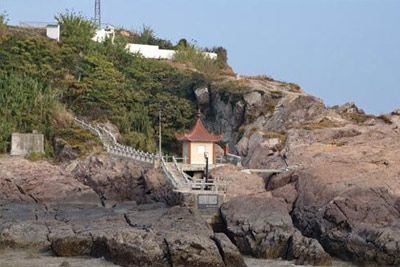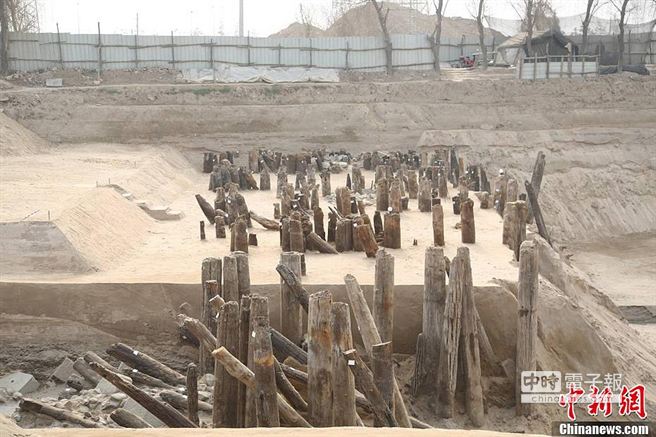Experience the Tranquility of Taizhou Kanmen Yanchaosuo: A Must-Visit Destination
An Essential Guide to Visiting Taizhou Kanmen Yanchaosuo
In This Guide
- An Essential Guide to Visiting Taizhou Kanmen Yanchaosuo
- The Rich History of Taizhou Kanmen Yanchaosuo
- Main Highlights: What to See at Taizhou Kanmen Yanchaosuo
- Planning Your Visit: A Practical Guide
- Tickets, Hours, and Booking
- How to Get There
- Local Cuisine and Accommodation
- Frequently Asked Questions
- Final Thoughts on Your Trip
Nestled along the picturesque coastline of Zhejiang Province, Taizhou Kanmen Yanchaosuo, or the Kanmen Tide Gauge Station, is a remarkable testament to China’s commitment to maritime science and environmental monitoring. Established in 1929, this station holds the distinction of being the first tide gauge built by Chinese engineers, representing a significant leap in the nation’s ability to understand and manage its coastal waters.
Over the decades, the Kanmen Tide Gauge Station has evolved from a humble observatory into a pivotal center for oceanographic research and data collection, playing a crucial role in various scientific endeavors, including earthquake forecasting and environmental monitoring. The station’s historical significance is further underscored by its designation as a key cultural relic, protected by the national government.
Visitors to Kanmen are treated not only to a glimpse of this scientific marvel but also to the stunning natural beauty that surrounds it. The area is rich in marine biodiversity, making it an ideal spot for eco-tourism and educational experiences. As you explore the station and its fascinating history, you will also gain insight into the critical issues of climate change and rising sea levels, which are increasingly relevant in today’s world.

Taizhou Kanmen Yanchaosuo.
Whether you are a history buff, a science enthusiast, or simply seeking a serene escape by the sea, Taizhou Kanmen Yanchaosuo offers a unique blend of education and inspiration, set against the backdrop of one of China’s most beautiful coastal regions.
The Rich History of Taizhou Kanmen Yanchaosuo
The Taizhou Kanmen Yanchaosuo, often referred to as the Kanmen Tide Gauge Station, holds a significant place in China’s maritime and scientific history. Constructed in 1929, it was the first tide gauge station built by Chinese engineers, marking a pivotal shift in the country’s approach to geodetic and oceanographic research.
The need for such a facility arose in the wake of the Opium Wars in the mid-19th century, which exposed China’s vulnerability to foreign powers. As imperialist nations established tide gauge stations along coastal ports for military navigation and resource exploitation, the Chinese government recognized the necessity of creating its own scientific infrastructure to establish an independent national elevation benchmark. This led to the Nationalist government initiating plans in 1927 to develop a tide observation agency.

Taizhou Kanmen Yanchaosuo.
After extensive site evaluations, the Kanmen site was chosen due to its favorable geographical conditions. Under the direction of the prominent Chinese astronomer and geodesist, Mr. Cao Mu, the construction of the station began in 1929. By 1930, the Kanmen Tide Gauge Station was operational, collecting tidal data that would be crucial for establishing a national elevation reference point.
Within a few years, the station began to yield important results, culminating in the establishment of the Kanmen Zero Point, which served as a critical reference for height measurements across multiple provinces, including Zhejiang, Jiangsu, and Fujian. Unfortunately, the station’s operation was interrupted during the Japanese invasion in 1939 and later abandoned.
After the establishment of the People’s Republic of China in 1949, the station was revitalized and played a key role in the production of military maps and coastal surveys. It underwent significant renovations in the 1950s, allowing it to adapt to the technological advancements of the time. By 1958, it was officially renamed the Kanmen Ocean Station, reflecting its expanded role in oceanographic research.
In the years that followed, the Kanmen station became vital in providing accurate tidal and sea-level data, contributing to studies on climate change and the impact of sea-level rise on coastal regions. In 2010, it was designated a marine science education base by the Zhejiang Provincial Ocean and Fisheries Bureau, highlighting its ongoing importance in promoting marine science and environmental awareness.
Today, the Kanmen Yanchaosuo stands not only as a historical monument but also as a modern scientific facility equipped with advanced technology for continuous monitoring of tidal and environmental conditions. Its legacy continues to influence oceanographic research, making it a cornerstone of China’s efforts to understand and manage its coastal and marine environments.

Taizhou Kanmen Yanchaosuo.
Main Highlights: What to See at Taizhou Kanmen Yanchaosuo
Taizhou Kanmen Yanchaosuo, also known as the Kanmen Tide Observation Station, holds a significant place in both the history of Chinese maritime science and the cultural heritage of the region. Here are the key highlights that make this site a must-visit:
Historical Significance
Established in 1929, Kanmen Yanchaosuo was China’s first tide observation station constructed by native engineers. Its creation marked a pivotal moment in establishing a national surveying benchmark, helping to assert China’s sovereignty over its geographical data amidst foreign imperialism. The site is a testament to the efforts to develop an independent scientific framework in a tumultuous historical context.
Cultural Heritage
As a nationally recognized heritage site, Kanmen Yanchaosuo is an essential stop for those interested in China’s scientific history. The station has survived over 80 years of natural elements and continues to symbolize resilience and progress in marine science.
Scientific Importance
Today, the station serves as a key marine monitoring facility under the National Oceanic Administration. It contributes crucial data for various scientific endeavors, including earthquake prediction, crustal movement studies, and climate change research. The precise measurements taken here have played a significant role in understanding rising sea levels, making it an invaluable resource for both national and international researchers.
State-of-the-Art Facilities
The station is equipped with modern technology for automated tide level measurements, providing real-time data that is crucial for understanding maritime dynamics. Its upgraded facilities allow for comprehensive observations related to oceanography, meteorology, and environmental science, supporting a wide array of scientific research.

Taizhou Kanmen Yanchaosuo.
Scenic Location
Nestled along the picturesque coastline of Yuhuan in Zhejiang Province, the Kanmen Tide Observation Station offers stunning views of the surrounding sea and landscape. Visitors can enjoy the natural beauty of the area while learning about the tides and their impact on the environment.
Educational Role
Designated as an educational base for marine science in Zhejiang, the station plays a vital role in promoting awareness about ocean conservation and the importance of marine ecosystems. It serves as a hub for educational programs aimed at fostering a deeper understanding of oceanic issues among visitors.
Access to Nearby Attractions
Located near several scenic spots, including the Yuhuan Water Conservancy Scenic Area and the Xuanmen Bay National Wetland Park, Kanmen Yanchaosuo is an ideal starting point for exploring the rich natural and cultural tapestry of the region.
Whether you’re a history buff, a science enthusiast, or simply looking to enjoy the beauty of the Chinese coastline, a visit to Taizhou Kanmen Yanchaosuo offers a unique blend of learning, exploration, and appreciation for China’s maritime heritage.

Taizhou Kanmen Yanchaosuo.
Planning Your Visit: A Practical Guide
When planning a visit to the Taizhou Kanmen Yanchaosuo, also known as the Kanmen Tide Observation Station, there are several practical tips and essential information to keep in mind to ensure a smooth and enriching experience.
Getting There
Situated in the coastal area of Qiantai Village in Kanmen Town, Yuhuan City, Zhejiang Province, the Kanmen Tide Observation Station is easily accessible from major cities. The nearest major city, Taizhou, is approximately 30 kilometers away. Visitors can reach the station via local buses or taxis from Taizhou, which offer convenient transport options.
Best Time to Visit
The best time to visit the Kanmen Tide Observation Station is during spring (March to May) and autumn (September to November) when the weather is mild, and the scenery is particularly beautiful. Summers can be hot and humid, while winters are cool but generally dry.
What to Expect
The Kanmen Tide Observation Station, established in 1929, is an important scientific site dedicated to the study of tidal patterns, sea level changes, and geological movements. As the first tide observation station built by locals in China, it boasts a rich history and significant scientific contributions. Visitors can explore the following highlights:

Taizhou Kanmen Yanchaosuo.
- Historical Significance: Learn about the station’s role in establishing China’s elevation benchmarks and its contributions to national defense and scientific research.
- Educational Displays: The station features exhibits that detail its history and the scientific processes involved in tide observation.
- Scenic Views: Enjoy stunning coastal views, especially during tidal changes, which can be a mesmerizing sight.
Amenities
While the Kanmen Tide Observation Station is primarily a research facility, it does offer limited amenities for visitors. There are basic restroom facilities on-site, and it’s advisable to bring water and snacks. For a more comprehensive experience, consider visiting nearby attractions such as the Yuhuan Water Conservancy Scenic Area and the Xuanmen Bay National Wetland Park, which offer additional recreational opportunities.
Accessibility
The site is accessible for individuals with mobility challenges, but it is recommended to check in advance for any specific accommodations or assistance that may be necessary.
Safety and Regulations
Visitors should adhere to all safety guidelines provided by the station staff. Given that this is a working scientific facility, some areas may have restricted access. It’s essential to respect these boundaries and follow any posted regulations to ensure a safe visit.

Taizhou Kanmen Yanchaosuo.
Nearby Attractions
Enhance your trip by exploring nearby attractions:
– Yuhuan Water Conservancy Scenic Area: A beautiful area perfect for a leisurely walk or picnic.
– Xuanmen Bay National Wetland Park: A serene park ideal for birdwatching and enjoying nature.
– Dongzhong Island: A short boat ride away, this island features picturesque views and local seafood delicacies.
Conclusion
A visit to the Taizhou Kanmen Yanchaosuo offers an intriguing glimpse into China’s maritime science and history. With stunning natural scenery and educational opportunities, it is a worthwhile destination for both enthusiasts of science and those looking to explore the beautiful coast of Zhejiang Province. Plan your visit accordingly to make the most of this unique experience!
Tickets, Hours, and Booking
Visiting the Taizhou Kanmen Yanchaosuo (坎门验潮所) offers a unique glimpse into China’s maritime history and scientific endeavors. When planning your visit, it’s important to know the ticketing details to ensure a smooth experience.
Ticket Information
-
Admission Fees: Entry to the Kanmen Tide Monitoring Station is typically free for visitors, making it an accessible destination for tourists and locals alike. However, keep an eye out for any special exhibitions or guided tours that may require a small fee.
-
Opening Hours: The facility is open to visitors daily, but it’s wise to check specific hours ahead of your visit. Generally, the site operates from 8:00 AM to 5:00 PM. It’s advisable to arrive early to fully explore the area and avoid crowds, especially during peak tourist seasons.
-
Guided Tours: While general entry might be free, guided tours may be available for a nominal fee. These tours provide deeper insights into the historical significance of the station, its role in oceanic monitoring, and its contributions to scientific research. Check in advance for availability and to book your spot.
-
Educational Programs: As a recognized marine science education base, the station often hosts educational programs and activities aimed at increasing awareness about marine science and environmental conservation. Participation in these programs may require prior registration.
-
Accessibility: The site is designed to be accessible for all visitors. If you have specific needs, it’s recommended to contact the station ahead of your visit for any assistance required.
-
Location and Transport: The Kanmen Tide Monitoring Station is situated in Qiantai Village, near the picturesque coastline of Yuhuan City, Zhejiang Province. Visitors can reach the site via local transportation options such as buses or taxis. Parking facilities may also be available for those traveling by car.

Taizhou Kanmen Yanchaosuo.
Prepare for a fascinating journey into the heart of marine science at the Kanmen Tide Monitoring Station, where the tides of history meet modern scientific exploration!
How to Get There
Reaching Taizhou Kanmen Yanchaosuo (坎门验潮所) can be an exciting part of your visit, as this significant marine monitoring station is located in a picturesque coastal area of Zhejiang Province. Here’s a breakdown of the transportation options available for travelers.
Getting There by Air
The nearest major airport is Taizhou Luqiao Airport (HYN), located approximately 30 kilometers (about 19 miles) from Kanmen Yanchaosuo. This airport offers domestic flights from major Chinese cities. From the airport, you can hire a taxi or use ride-sharing apps to reach your destination directly. The journey will take around 40 minutes, depending on traffic conditions.
Alternatively, for international travelers, Ningbo Lishe International Airport (NGB) or Hangzhou Xiaoshan International Airport (HGH) are viable options. Both airports offer a wider range of international flights. Once you arrive at either airport, you can take a train or bus to Taizhou city, followed by a taxi to Kanmen Yanchaosuo.

Taizhou Kanmen Yanchaosuo.
By Train
Taizhou has a well-connected railway station, Taizhou Railway Station, which is about 40 kilometers (25 miles) from Kanmen Yanchaosuo. You can catch high-speed trains from major cities like Shanghai, Hangzhou, and Ningbo. Train schedules are frequent, and the journey is comfortable and efficient.
Upon arriving at Taizhou Railway Station, you can take a taxi or local bus to Kanmen Yanchaosuo. The taxi ride will take about 50 minutes, while local buses may take longer depending on the route and traffic.
Local Transportation
Once in the vicinity of Kanmen Yanchaosuo, there are several local transportation options:
- Buses: Local buses frequently run to the area from Taizhou city. Check local schedules for routes that stop near Kanmen Yanchaosuo.
- Taxis: Taxis are widely available and a convenient way to reach your destination. Ride-sharing services are also operational in Taizhou.
- Bicycles and Scooters: For those who enjoy a bit of exercise, renting a bicycle or scooter is a popular option for exploring the scenic coastal area around Kanmen Yanchaosuo.
Navigating the Area
The Kanmen Yanchaosuo is situated near the coast, providing beautiful views and opportunities for exploration. If you plan to stay in the area, consider accommodations that offer bicycle rentals or guided tours, which can enhance your experience and allow you to discover more hidden gems in this beautiful region.

Taizhou Kanmen Yanchaosuo.
Conclusion
Whether you are arriving by air, train, or local transport, getting to Taizhou Kanmen Yanchaosuo is straightforward. With the variety of transportation options available, you can easily plan your journey to this historically and scientifically significant site, surrounded by the stunning natural beauty of Zhejiang Province.
Local Cuisine and Accommodation
When visiting Taizhou’s Kanmen Yanchaosuo, a blend of local flavors and comfortable accommodations awaits you. This coastal region is renowned for its fresh seafood, vibrant local cuisine, and hospitable lodging options.
Culinary Delights
Seafood Specialties
Being situated along the coast, Taizhou boasts an impressive array of seafood dishes. Don’t miss out on trying the local specialty steamed crab, known for its sweet and tender meat. Restaurants like Xuanmen Bay Seafood Restaurant offer a variety of oceanic delights, where you can savor freshly caught fish, shrimp, and clams prepared in traditional Chinese styles.
Local Snacks
For a quick bite, head to street vendors or local markets where you can sample Yuhuan fish balls, a popular snack made from minced fish and served with a spicy dipping sauce. Another must-try is the scallion pancake, crispy on the outside and soft within, often enjoyed with a side of soy sauce.
Dining Recommendations
1. Yuhuan Seafood Pavilion – A great spot for a family meal, featuring large portions and a menu that highlights local specialties.
2. Sanqi Restaurant – Known for its authentic Jiangsu cuisine, this place offers a cozy atmosphere perfect for a relaxed dining experience.
3. Kanmen Old Town Food Street – A bustling area filled with various food stalls where you can try different local snacks and delicacies while enjoying the vibrant atmosphere.

Taizhou Kanmen Yanchaosuo.
Where to Stay
Accommodation Options
For a comfortable stay near Kanmen Yanchaosuo, there are several excellent choices ranging from budget hotels to boutique accommodations.
-
Taizhou Yuhuan Hotel
Located just a short distance from the Kanmen site, this hotel offers modern amenities and breathtaking views of the coastline. Guests can enjoy spacious rooms, complimentary breakfast, and easy access to local attractions. -
Yuhuan International Hotel
A luxurious option that combines elegance with comfort, featuring well-appointed rooms, a fitness center, and on-site dining. It’s perfect for travelers looking for a more upscale experience while still being close to the ocean. -
Budget Inn
For those traveling on a budget, this inn provides clean and simple accommodations without breaking the bank. It’s a great option for backpackers and those looking for a no-frills stay, with easy access to public transport and local eateries.
Final Tips
When planning your visit, consider timing your meals to coincide with the local markets’ operating hours, allowing you to experience the freshest offerings. Additionally, be sure to reserve accommodations in advance, especially during peak tourist seasons, to ensure a hassle-free stay. Enjoy your culinary and cultural adventure at Kanmen Yanchaosuo!

Taizhou Kanmen Yanchaosuo.
Frequently Asked Questions
-
What is Taizhou Kanmen Yanchaosuo?
Taizhou Kanmen Yanchaosuo, also known as the Kanmen Tide Monitoring Station, is China’s first tide station built by Chinese nationals. Established in 1929, it serves as a critical site for observing tidal movements and monitoring sea level changes along the coast of Zhejiang Province. -
Where is the Kanmen Tide Monitoring Station located?
The station is situated on the coast of Qiantai Village in Kanmen Town, Yuhuan City, Taizhou, Zhejiang Province. It occupies an area of approximately 2,000 square meters, providing a scenic view of the surrounding coastal environment. -
What is the historical significance of the Kanmen Tide Monitoring Station?
The station holds historical importance as it was designed and constructed by Chinese engineers in the early 20th century, during a time when foreign powers dominated surveying efforts in China. It established a national elevation benchmark and has been instrumental in various geological and oceanographic studies. -
What kind of research and monitoring does the Kanmen Station conduct?
The Kanmen Station plays a vital role in a variety of research areas, including seismic forecasting, geodesy, crustal movement studies, and marine resource investigations. It provides essential data for understanding sea level rise and its implications for coastal development and disaster management. -
Can visitors access the Kanmen Tide Monitoring Station?
Yes, visitors can explore the area around the Kanmen Station. It is part of a broader coastal landscape that includes scenic spots and parks, making it an interesting destination for those interested in marine science and environmental studies. -
What nearby attractions can visitors enjoy?
Travelers to the Kanmen Tide Monitoring Station can also visit several nearby attractions, including the Yuhuan Water Conservancy Scenic Area, Xuanmen Bay National Wetland Park, and various agricultural and cultural parks that showcase the natural beauty and heritage of the region. -
What facilities are available at the Kanmen Tide Monitoring Station?
The station is equipped with modern observation technology, including high-precision GPS and automated tidal monitoring systems. These facilities enable continuous and accurate data collection regarding tidal levels and environmental changes. -
How does the Kanmen Station contribute to global climate studies?
The Kanmen Tide Monitoring Station provides valuable data on sea level rise, which is critical for understanding the impacts of climate change. Its long-term observations contribute to national and international research efforts aiming to address the challenges posed by rising sea levels and changing coastal environments.
Final Thoughts on Your Trip
Visitors to Taizhou’s Kanmen Yanchaosuo are not just stepping into a monument of maritime history; they are immersing themselves in a legacy that intertwines science, geography, and national pride. As China’s first self-built tidal station, this site echoes the resilience and ingenuity of a bygone era while playing a vital role in contemporary maritime and environmental research.
Exploring the Kanmen Yanchaosuo offers a unique opportunity to appreciate the intricate relationship between land and sea, and to understand the ongoing efforts in monitoring climate change and sea-level rise. Surrounded by stunning coastal landscapes, this historical site serves as a reminder of the importance of scientific advancement in the face of environmental challenges.
Whether you are a history enthusiast, a science buff, or simply in search of breathtaking views and rich cultural experiences, a visit to Kanmen Yanchaosuo promises inspiration and insight. Dive into this pivotal piece of maritime history, and let its story motivate you to reflect on the delicate balance between human innovation and nature.





